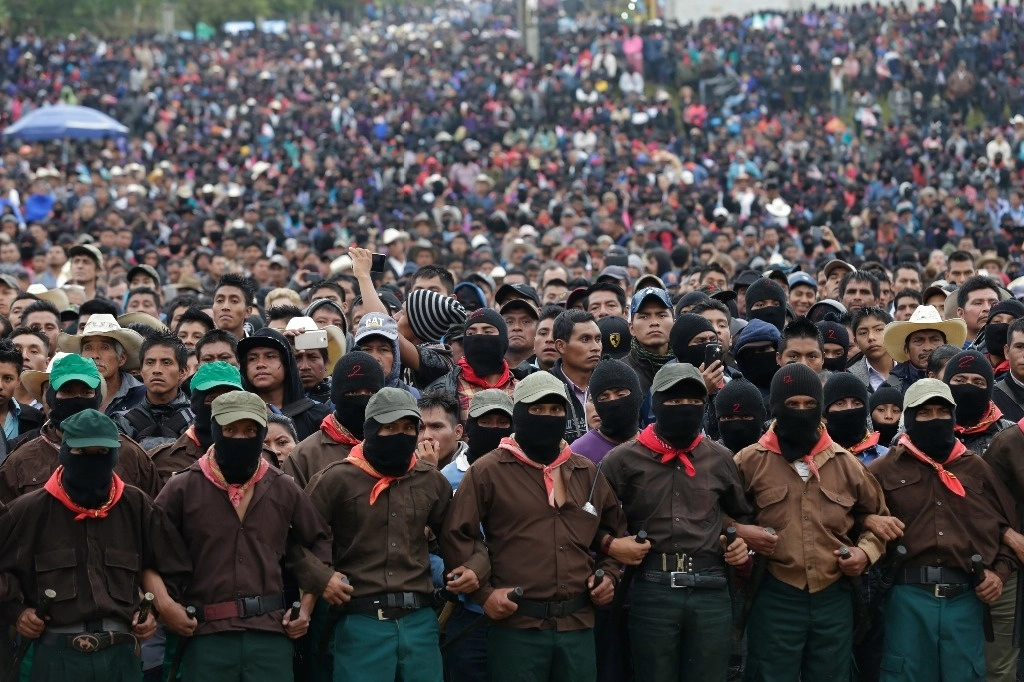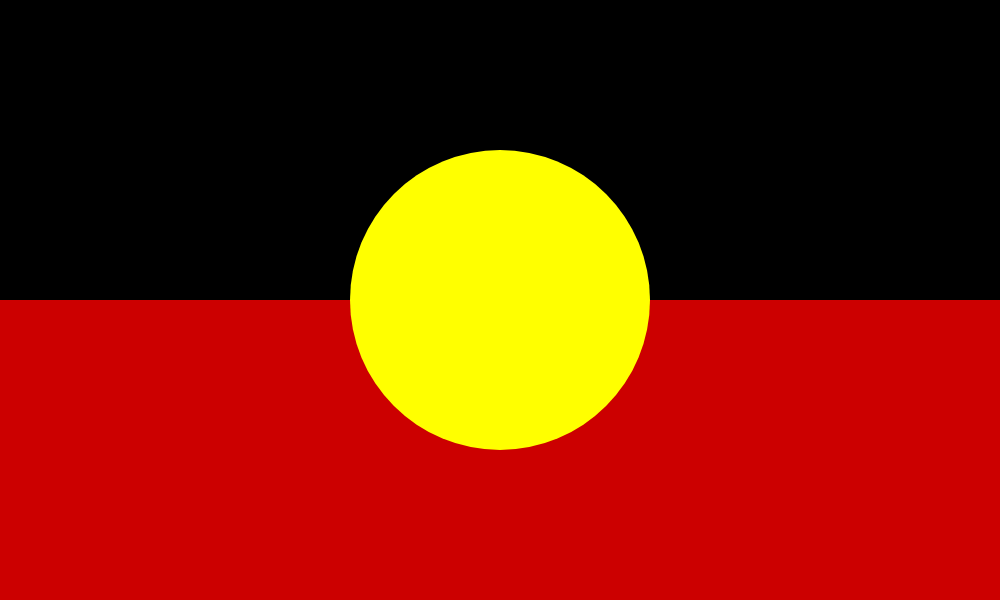The political-military origins of the EZNL are found in the National Liberation Forces (FLN), a clandestine organization formed at the end of the 1960s in northern Mexico, inspired by the Cuban revolution, the FLN organized a guerrilla struggle with the aim of achieving the construction of socialism in Mexico. But some time later, in the early 1970s, they ended their activities abruptly when their structure in Mexico City was discovered by state security forces and many of their militants, both in Chiapas and Mexico City, were brutally assassinated. However, its survivors did not give up and managed to reorganize and settle in 1983 in Chiapas, pursuing the same objectives. However, in order to achieve their objectives, they formed the EZLN and a social base to sustain it.
The main social base of the EZLN is in the indigenous municipalities of the Cañadas region, the highlands and the northern zone of Chiapas. A large number of the commanders are indigenous and, at least since 1993, the military apparatus has been subordinated to a council of delegates from the Zapatista communities called the Clandestine Revolutionary Indigenous Clandestine Committee (CCRI). The indigenous communities in the country have a long history of exploitation, abandonment and exclusion from national political and economic life, and have strengthened their community organization, while historically leading various social movements in search of improving their living conditions, preserving their traditions and customs or for their self-determination and government; The jungle zone and the highlands of Chiapas are no exception, so the guerrilla group that arrived there found an already highly politicized indigenous society, with experience in mobilization and with permanent communication with diverse political and social organizations; The little or no response to their demands on the part of federal, state or local authorities, and the permanent violation of their fundamental rights, may explain, on the one hand, the reasons why they opted for the armed struggle in 1994. On the other hand, their growing participation in the Zapatista uprising reinforced the indigenous character of the EZLN, which quickly integrated their demands in its program and discourse, which generated that during the negotiations with the federal government, a process was initiated to establish a new relationship between the State and the indigenous peoples of the country. The EZLN, on behalf of the national indigenous movement, incorporated the demands and proposals of the various indigenous representations of the country.
Being the indigenous peasants “support bases” for the EZLN, we can highlight five forms of cooperation between these two groups: safeguarding the clandestinity of the insurgents; recruiting new combatants; guaranteeing supplies to sustain the guerrillas; participating in protest mobilizations; and carrying out collective infrastructure work and (inter)community services. These functions strengthen the bonds of (inter)community solidarity, increase social integration and strengthen a “Zapatista identity”.
In the 1994 uprising in Chiapas, the EZLN demanded the vindication of the ownership of the lands taken from the indigenous communities, a better distribution of wealth and the participation of the different ethnic groups in the organization of the state and the country; the reaction of the federal government was to send troops to Chiapas to quell the rebellion. The mobilizations of the civil society stopped the attacks and after 12 days of armed conflict, the federal government unilaterally declared a ceasefire.
The talks between the EZLN and the federal government ended with the signing in February 1996 of the San Andres Accords on “Indigenous Rights and Culture”, which committed the State to recognize indigenous peoples constitutionally and to grant them autonomy. The dialogues also gave rise to the foundation of the National Indigenous Congress (CNI) on October 12, 1996, a movement of indigenous peoples, neighborhoods, tribes, nations, collectives and organizations, with the slogan “Never again a Mexico without us” and with the objective of the integral reconstitution of the indigenous peoples. In March 1995, the Commission for Concord and Pacification (COCOPA), a bicameral legislative commission made up of the Mexican Chamber of Deputies and Senate, was formed to assist in the dialogue process.
Shortly after they were signed, the San Andres Accords were ignored by President Ernesto Zedillo. A policy of encirclement and siege, organized by the federal and local governments with the support of landowners and cattle ranchers, organized paramilitary forces trained by the army itself and allocated considerable resources to the cooptation of citizens and groups, while at the same time accentuating the expulsion of opponents from their lands and villages.
COCOPA, which was charged with drafting a proposal for constitutional reform that would include the main consensuses established in the San Andres Accords, presented its initiative to the parties in November 1996; the EZLN accepted the proposal; the President, although he accepted it at first, soon proposed modifications that substantially changed the proposal, without recognizing the rights of the indigenous peoples, and without recognizing any compromise. The peace process became bogged down.
In 2003, the EZLN announced the creation of Los Caracoles and the Good Government Councils, which reinforced the principle of “commanding by obeying”, -they listen, do, decide and command, obeying the communities and their territorial organizations-, and in the autonomy they allow to propose a strong project of networks with national and international possibilities. Since its creation, Zapatista teachers and doctors have been trained and schools and clinics have been built. In addition, a justice system has been developed which is used by both Zapatistas and other members of society, as it is more efficient than the institutional system.
The Caracoles, in the words of Pablo González Casanova, “open new possibilities of resistance and autonomy for the indigenous peoples of Mexico and the world, a resistance that includes all social sectors that fight for democracy, freedom and justice for all”.
Megathreads and spaces to hang out:
- 📀 Come listen to music and Watch movies with your fellow Hexbears nerd, in Cy.tube
- 🔥 Read and talk about a current topics in the News Megathread
- ⚔ Come talk in the New Weekly PoC thread
- ✨ Talk with fellow Trans comrades in the New Weekly Trans thread
- 👊 Share your gains and goals with your comrades in the New Weekly Improvement thread
- 🧡 Disabled comm megathread
reminders:
- 💚 You nerds can join specific comms to see posts about all sorts of topics
- 💙 Hexbear’s algorithm prioritizes comments over upbears
- 💜 Sorting by new you nerd
- 🌈 If you ever want to make your own megathread, you can reserve a spot here nerd
- 🐶 Join the unofficial Hexbear-adjacent Mastodon instance toots.matapacos.dog
Links To Resources (Aid and Theory):
Aid:
Theory:



I feel like I have to mourn the life I could've lived like every 2-3 months
On the bright side I'm gonna cut some fabric for a quilt I intend to start soon
sad
I do it everydayThe mourning thing, not the quilt thing (I'm terrible at textile crafts but I always hear my mom who's a knitter say I'd be good at it and I kinda doubt it)
I've been textile brained for the majority of my life, if you get really into knitting you just kinda end up into all the other ones slowly
I'm trying to be more accepting that my life is on a different trajectory than I wanted and said trajectory keeps changing for what seems like the worst but like can I get a fucking break from life changing events I still need to catch up with the other ones from like 2018
I feel like learning how to stitch well and mend stuff is something I should learn (and would find rewarding if I get competent at it)
and yeah, I feel like I'm just recently getting my shit together for the first time since 2019/early 2020 and all the "what ifs" really eat at me
You could look into visible mending, some styles are really easy to do with minimal equipment. Also check out a "speedweaver" for a cool mending tool, I don't have one but love the patches they make
I read Percy Jackson when I was a kid and there's one part where he talks about this girl he could've stayed on an island with and refers to her as his "biggest what if" and it changed my brain forever. I think I have multiple "biggest what ifs" though
Mood. Doing that today, looking at some of the clothes and costumes i've made and wondering what could have been if I didn't have bipolar, or had been properly medicated at 20, if I'd been born in a more supportive society.
Quilt that quilt! Quilting is always a worthy use of time. Beauty and comfort in a single object is a rare and wonderful thing.
The worst part for me is the (correct) nagging voice in my head that reminds me that different isn't always better or that I could've ended up here anyway. It also could've been a lot better though lmfao
I finished cutting the fabric! There's another craft project I want to finish before really starting this one but I think I'll finish that one sometime this week and knew I wouldn't want to cut fabric for a quilt on a day I have work